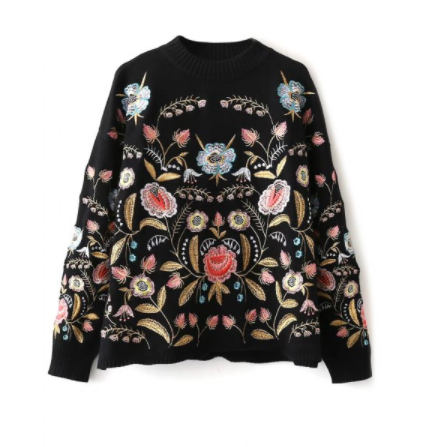Putting the threads together: Embroidery and Gingham
- Laura Chung
- May 8, 2017
- 2 min read
It’s old news that retro is the new vogue. But it’s not ‘fake news’ that embroidery and gingham are back in style too!

Both these trends have been around for a while, but recently they’ve resurfaced on our runways by designers including Gucci and Altuzarra.
It’s time for a quick history lesson on the origin of these fashion trends.
Embroidery
The art of embroidery has been around for thousands of years. Historians have found traces of it in the early cave-man era, where people would embroider beads, stones or bones onto their clothes. There are also traces of this art form in Ancient Greece and Ancient China, where murals depict images of people with richly embroidered clothing, indicating their wealth.
The practice slowly began to spread throughout the world, and until the Industrial Revolution, embroidery was done by hand. However, with the new technology of the 19th century, production became faster to keep up with the demand.
Embroidery peaked during the 1960s and early 2000s as it appeared in the worker’s rights and hippie movements and even in some of our favourite TV shows such as The Sisterhood of the Travelling Pants.
Thanks to the Industrial Revolution, embroidery has now become more accessible and mainstream, and is now making a comeback.
Here are a few of our favourite items on sale now:
Gingham
From Dorothy’s iconic dress in The Wizard of Oz, a picnic table cloth, or a wild-west shirt, Gingham is a versatile pattern.
The origins of this pattern are hard to trace as many cultures claim it as their own (read more about its history here). For example:
1. The pattern may have originated when Malaysia, Indonesia and India were colonised by the Dutch.
2.In Japan, the fabric was used to wrap around statues when a child dies.
3.The African Masaï tribe has used a check fabric pattern for thousands of years as part of their traditional costume.
Whatever its origins, the well-loved pattern represents youth and the ‘simple life’. The use of the pattern has evolved over the centuries, being used for items such as school uniforms, tablecloths and aprons.
Many people are afraid that the gingham pattern makes them look like they are wearing a tablecloth. So here are a few of our favourite items that won’t make it look like you stole a picnic rug (if you do wear a stolen picnic rug, let us know, we’d love to see it).































Commenti